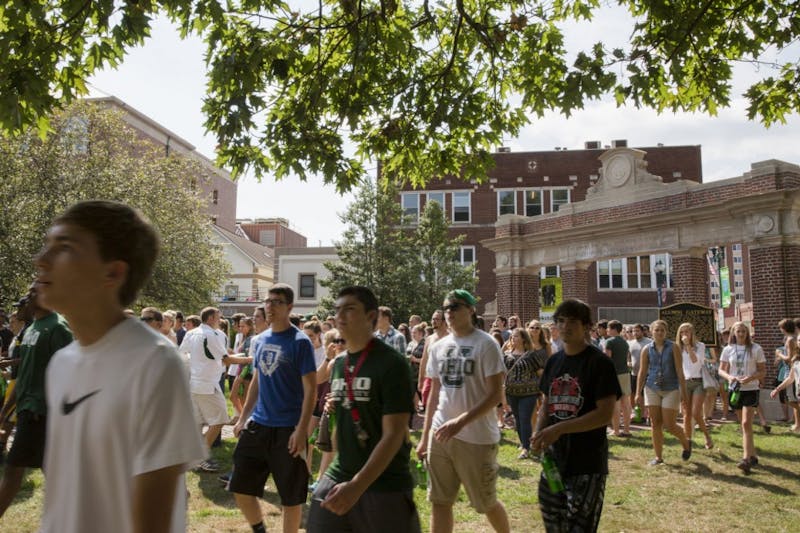Landing Page
Special Projects
This story is part of a series of specially designed stories that represents some of the best journalism The Post has to offer. Check out the rest of the special projects here.


TAYLOR JOHNSTON
05.25.17
L
anina Smith started her first semester at Ohio University with too many commitments. Smith, a rising senior studying biochemistry, said she took 18 credit hours, started a Spanish minor and joined several clubs.
“I was involved in 80 different things at once,” she said.
Like Smith, some OU juniors and seniors advise underclassmen not to overburden themselves with coursework or pick a major they’re not passionate about.
Smith said the adviser she spoke to during her freshman orientation recommended she take many classes. She tried taking too many time-consuming classes but ended up received poor grades and taking some of her introduction classes again.
She signed up for multiple learning communities so her classes would be organized. However, two of her classes required her to attend a lecture and lab which was more of a commitment.
Club involvement added more stress because Smith was active in the Lost Flamingo Theater Company, Quidditch Club and Jitterbug Club throughout the year.

Alex Driehaus | FILE
ncoming students pass through the Alumni Gateway on College Green after the Freshman Convocation on Aug. 23, 2015.
“I would suggest (joining) at least one (club) to get your feet wet and meet some people,” Smith said. “(But) I was in a play, I was in a sport and I was dancing.”
Smith said she wished she would have thought more about her long-term course schedule as a freshman since many upper-level classes have prerequisites.
Some students had to consider college costs such as tuition and housing when they were deciding whether to attend OU.
According to the OU website, tuition and fees for Ohio residents during the 2017-18 academic year totals $11,896.
Levi Brown, a rising junior studying political science, said OU was the only college that he could afford. With the commuter exemption, Brown did not have to pay for housing or a meal plan.
He worked three jobs in his first year at OU on top of other academic responsibilities.
“Paying for school is just about impossible,” Brown said. “It was very stressful, running from different jobs and doing those different assignments for scholarships and actual schoolwork.”
Brown said OU also offered a few degrees that he was interested in. He liked•political science but was afraid it would be “useless.” Brown started out studying education but switched majors during his sophomore year.
Looking back on his experiences as an underclassman, Brown said he should have come to OU as a political science major. That decision would have made scheduling easier and allowed him to explore other passions.
OU also encourages freshmen to join a learning community, so they can take a few general education classes with the same group of people and make friends.
Smith said learning communities are a good idea because they helped with scheduling courses.
“I joined learning communities my first year because it all mashed together and was super helpful,” Smith said.
Taking on more than average credit hours load can have negative impacts on a student’s semester, Smith said. An OU undergraduate student can take anywhere from 12 to 20 credit hours and keep a full-time student status.
“Don’t take more than 15 (credit hours) if you don’t think you can handle it,” Smith said. “Even if you think you can, don’t do it.”
Back to The Orientation GuideLanding Page
This story is part of a series of specially designed stories that represents some of the best journalism The Post has to offer. Check out the rest of the special projects here.